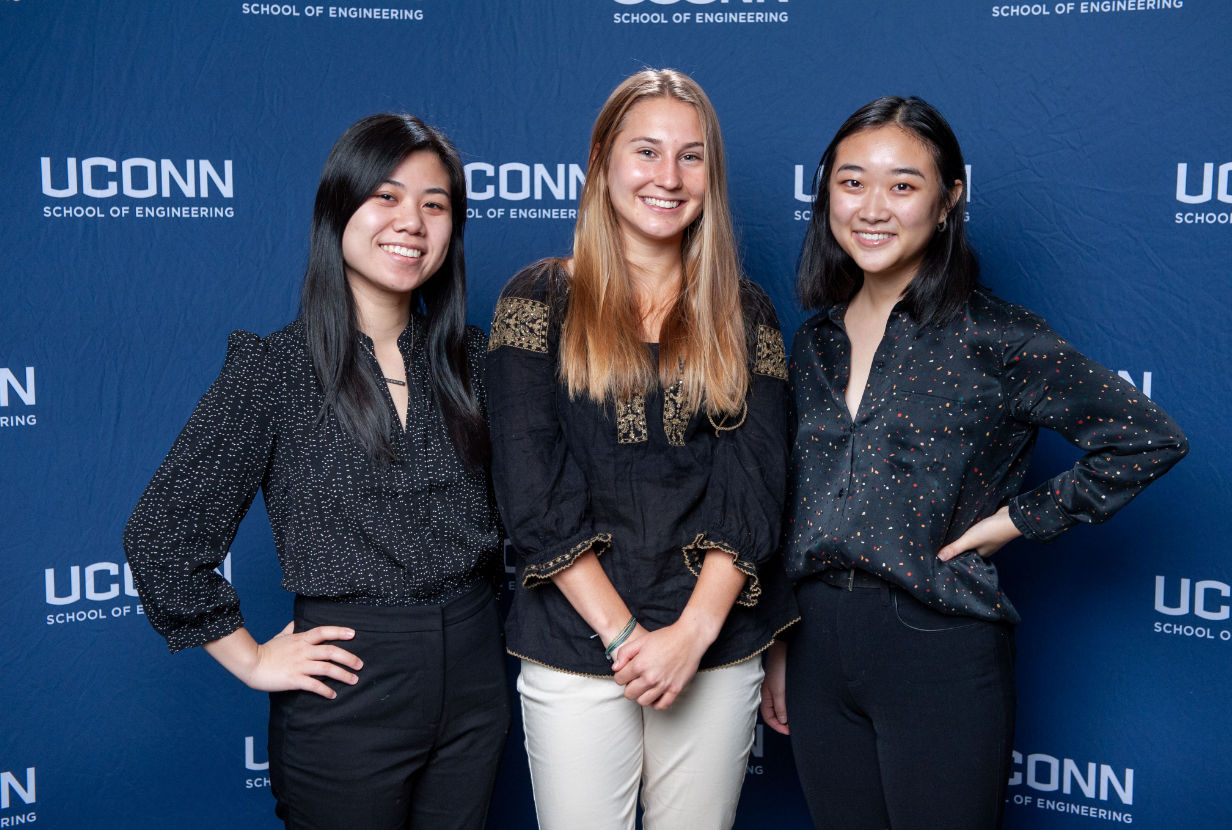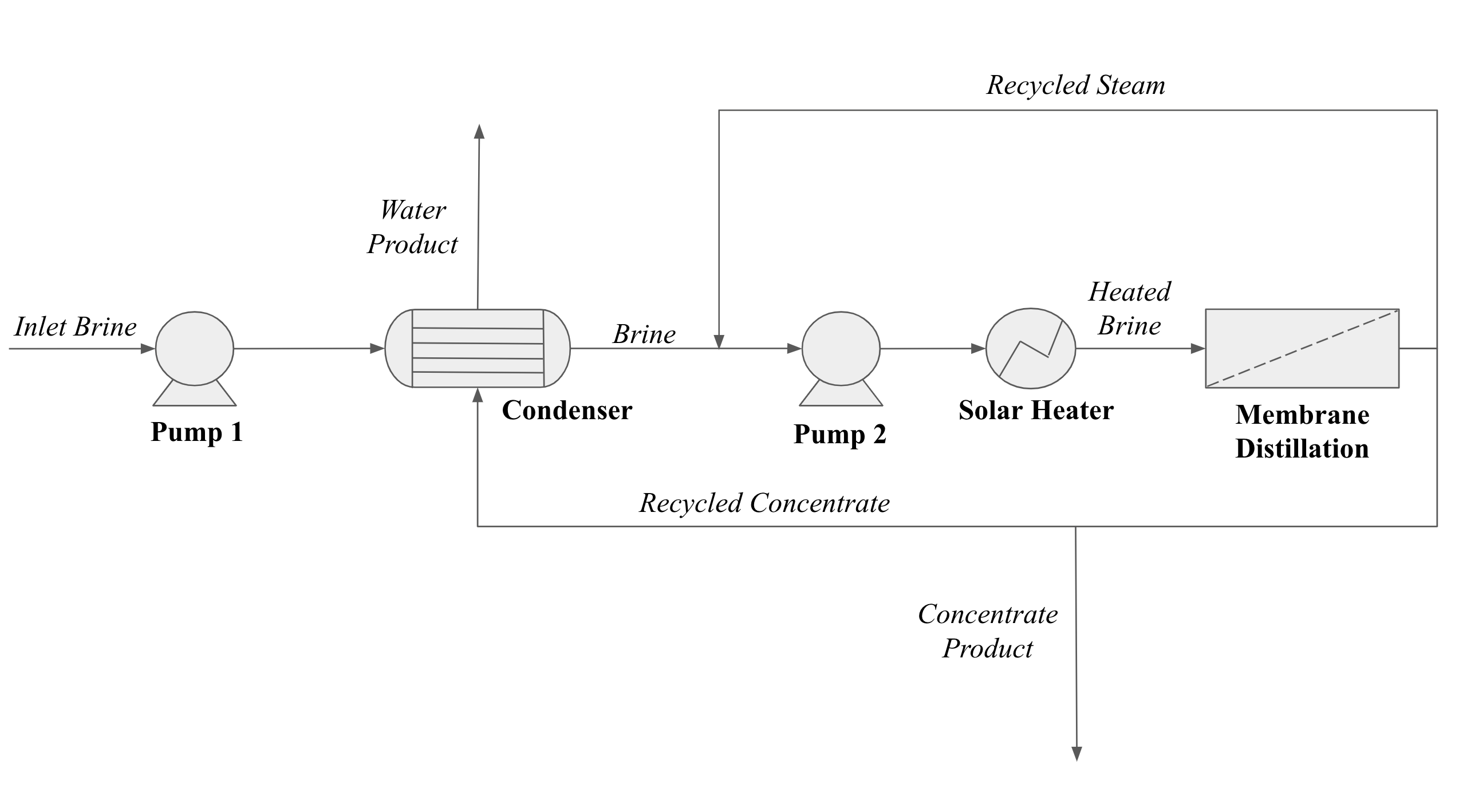
Figure 1

Team 9
Team Members |
Faculty Advisor |
Alyssa Kraus |
Jeffery McCutcheon and Edward Wazer Sponsor Other |
sponsored by

Solar-Thermal Driven Membrane Distillation
Currently, the oil and gas industry produces 20-30 billion barrels of high-concentration salt water per year. At inland facilities, this brine is typically disposed of through injection wells or evaporation ponds. Consequently, this discharge affects the surrounding soil and water quality, posing both safety and environmental hazards. Brine disposal, especially in large volumes, comes with the risk of spills during transportation, increased costs of evaporation-based treatment, and higher rates of equipment failure. These problems are prevalent in the southwest region of the US, which has the most oil wells in the nation. To mitigate these risks, it is necessary to reduce the volume of brine through desalination. Although a pressure-driven membrane process called reverse osmosis is commonly used for desalination, it cannot effectively treat high salinity brine due to osmotic pressure limitations. Instead, membrane distillation is an attractive alternative due to its low sensitivity to salinity, lower capital cost per unit, and better design flexibility relative to other thermal processes. For this project sponsored by the US Department of Energy’s Solar Desalination Prize, we designed a pilot-scale solar-powered ceramic-based membrane distillation system to concentrate high-salinity brine. The system installation will occur at the Kay Bailey Hutchison Desalination Plant in El Paso, Texas and will cost no more than $750k. Membrane distillation can easily integrate with alternative energy, so our proposed system is powered by solar energy. This system is driven by a vapor pressure gradient and removes water from brine over a hydrophobic and porous ceramic membrane. We modeled our system on Aspen Plus to optimize equipment size and energy consumption to stay within the economic constraints. As a result, we developed a potential solution for disposal of high-salinity brines, minimizing their environmental and human impact while utilizing a source of alternative energy.
